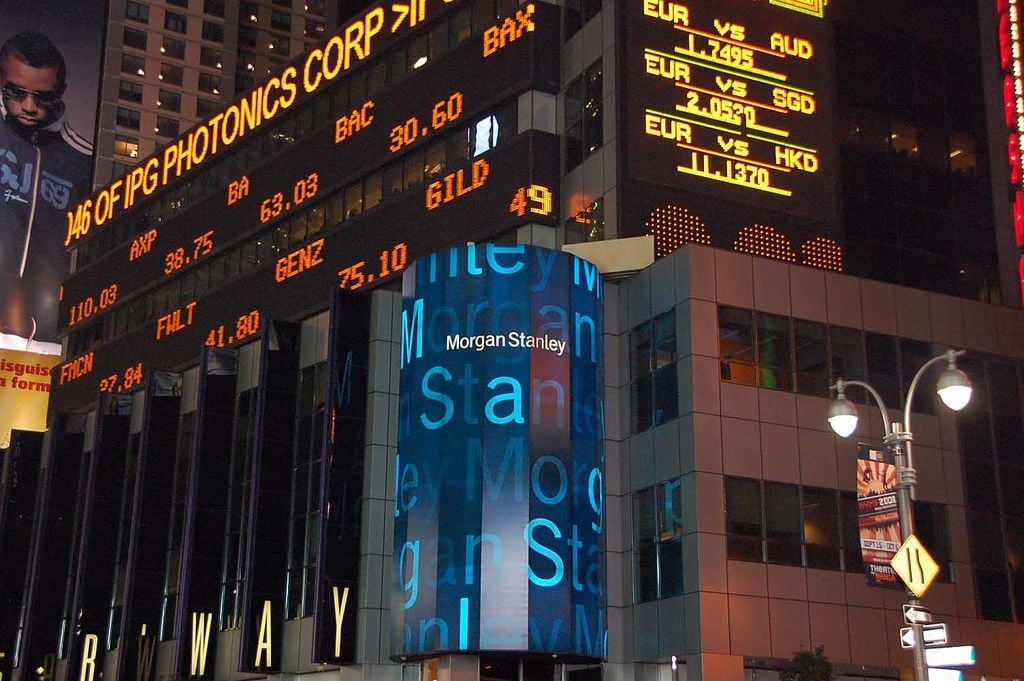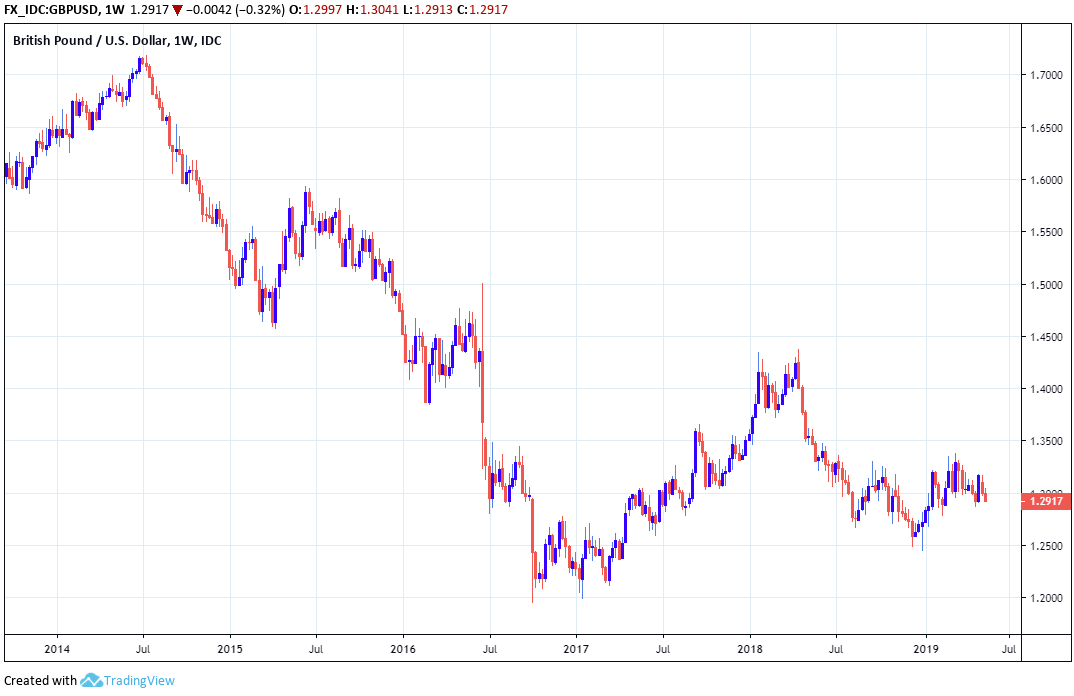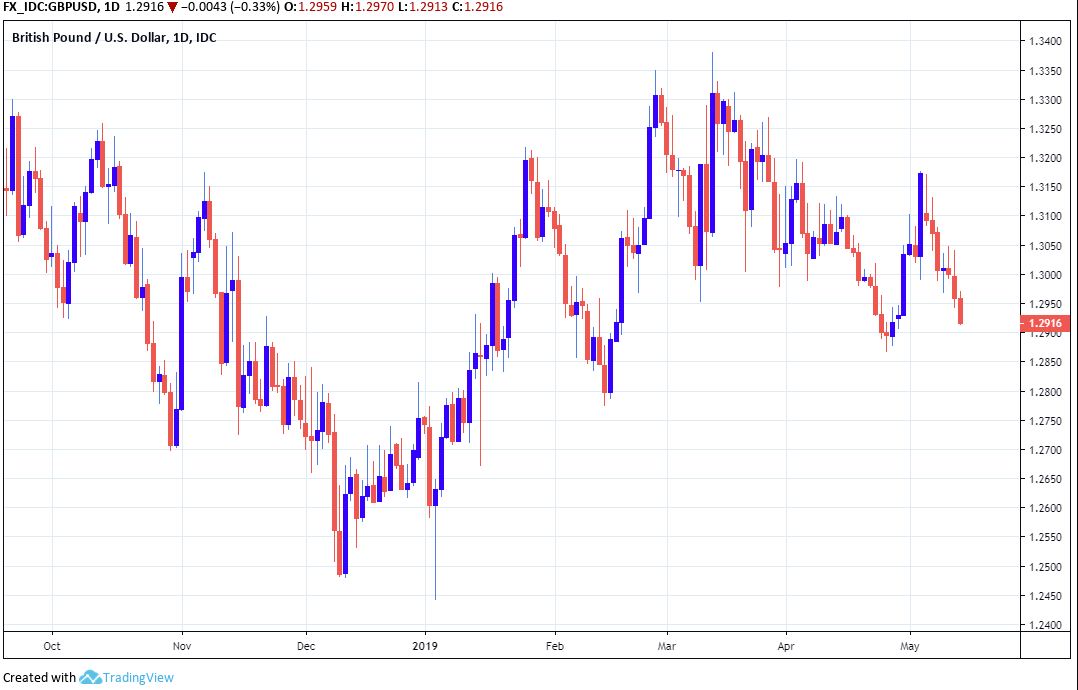Pound-to-Dollar Recovery is in Pipeline says Morgan Stanley
- Written by: James Skinner

© lj16, Reproduced Under CC Licensing
- GBP recovery remains in pipeline for 2019/20 says Morgan Stanley.
- But progress toward 'soft Brexit' required first, likely before year-end.
- GBP to 1.20 if all fails, but Q1 2020 sees recovery of referendum loss.
The Pound-to-Dollar rate will be slower to recover its post-referendum loss given a protracted period of infighting in Westminster and a greenback that's proving more resilient than previously thought, but a recovery is still in the pipeline for Sterling, analysts at Morgan Stanley say.
Sterling was up 1.4% against the Dollar for 2019 on Tuesday but it's been much higher in recent months. The exchange rate hit 1.3386 in March, leaving it with a 2019 gain of more than 5%, but the Pound has since ceded ground to the greenback.
Nonetheless, analysts at Morgan Stanley are not giving up on the British currency just yet. They've been cheering for gains by the exchange rate since Prime Minister Theresa May's EU withdrawal and future relationship plans first failed to clear parliament.
Their idea was, and is now, that a lack of support for the PM's proposals among Conservative Party MPs in parliament would lead to talks with the opposition and attempts to secure a cross-party agreement on how to exit the EU, which ultimately culminates in a 'soft Brexit'.
"A no-deal Brexit continues to be a low-probability tail risk event while the chances of an orderly soft Brexit are high, in our view. As such, current UK asset valuations look cheap, and we expect the factor underpinning this undervaluation to be removed with a soft Brexit resolution in 4Q19, which is likely to drive capital inflows into the UK and lift asset valuations," says Hans Redeker, head of FX strategy, in Morgan's latest FX outlook.

Above: Pound-to-Dollar rate shown at daily intervals.
Morgan Stanley calculates that any deal done with the opposition would ultimately lead to a "softer" form of Brexi that would inevitably leave the UK subordinate to the EU institutions in a range of areas and minimise the level of separation that actually takes place.
A third failed attempt by the Prime Minister at securing parliamentary support for the EU Withdrawal Agreement, and subsequent failures to find a majority favouring any one path out of the European Union has led the UK into a second extension of the Article 50 negotiating window.
This turned the tide of capital flows against the Pound in late March, as it was seen ensuring the Bank of England (BoE) remains on the sidelines itching to raise its interest rate, but prevented from doing so by a highly uncertain outlook for the economy.
"A tight labor market and loose fiscal policy suggest that domestic inflationary pressure should also remain high, keeping the BoE on a hawkish path. Once an orderly Brexit arrangement is in place, this should prompt the BoE to hike rates more and faster than currently priced in by markets, providing upside for UK yields with which GBP is highly positively correlated," Redeker writes.
The UK unemployment rate fell to its lowest level since the final quarter of 1974 during the January-March 2019 period, and the average wage packet grew by 1.5% after adjusting for inflation, which is close to the kind of pay growth that has recently had the BoE fearing a sudden increase in inflation.
Meanwhile, the economy grew by 0.5% in the first quarter of 2019, up from 0.2% at the end of last year and prompting the BoE to upgrade its forecast of 2019 GDP growth to 1.5%. This came despite pandemonium in parliament that some observers labelled a 'constitutional crisis'.
However, and despite how frequently domestic politicians claim to have removed a so-called no deal Brexit from the table, no such thing has been achieved.

Above: Pound-to-Dollar rate shown at weekly intervals.
The UK parliament has until October 31 to approve the EU Withdrawal Agreement negotiated by Theresa May and her allies, and if a sufficient number of MPs don't back it then the PM will be forced to choose between requesting a third extension of the Article 50 period and a so-called 'no deal Brexit'.
"We like to be long GBPUSD as one of our top trades, projecting the pair to reach 1.38 by the end of 2019," says Redeker. "In the absence of early elections, the downside for GBPUSD is limited to 1.20, in our view, particularly in a weak USD environment. "
Pound Sterling Live is wagering that cross-party talks to agree a path out of the European Union that is acceptable to both of the main political parties, both of which are under considerable pressure in opinion polls for the events of recent months and for now having consorted with each other, will ultimately fail.
Such a thing could see the Prime Minister resign or be forced out of office, elevating a Brexit-supporting replacement into 10 Downing Street. That could then bring about a range of negative scenarios for the Pound, including a general election that risks placing the Labour Party into government and, or, a no deal Brexit.
Morgan Stanley forecast the Pound will remain around 1.29 against the Dollar until the end of June, before rising to 1.32 in time for the end of September and 1.38 by year-end. The bank projects an exchange rate of 1.45 before the end of March 2020, the level it was at before the referendum of June 2016.
Time to move your money? Get 3-5% more currency than your bank would offer by using the services of foreign exchange specialists at RationalFX. A specialist broker can deliver you an exchange rate closer to the real market rate, thereby saving you substantial quantities of currency. Find out more here.
* Advertisement




